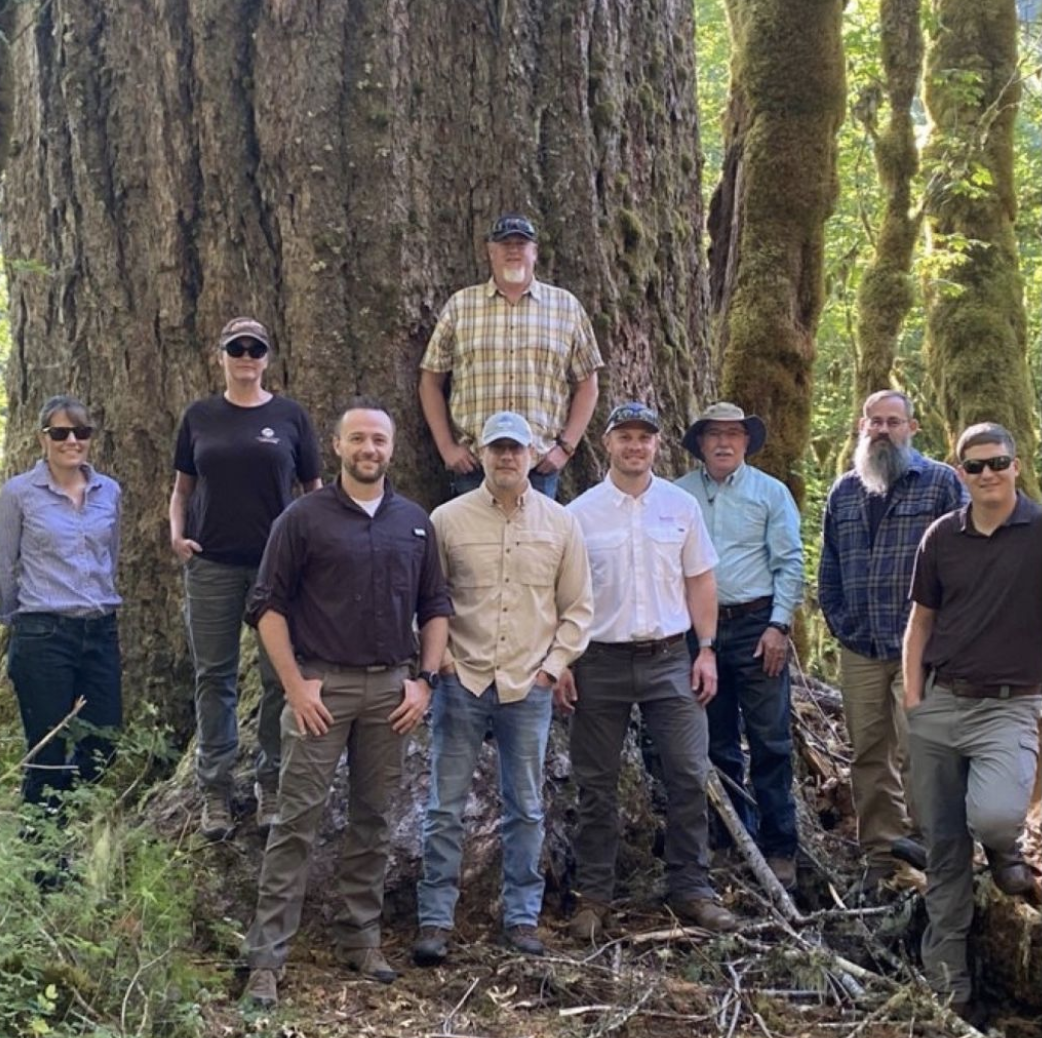The Pacific Northwest is no stranger to wildfires. Hundreds — if not thousands — of wildfires ravage homes, buildings, land and wildlife habitat every year. In fact, more than 2,000 wildfires took place in Oregon in 2020 alone, resulting in 11 deaths, significant damage to thousands of homes and buildings, and the burning of more than 1.2 million acres of land.
As the smoke cleared, Corteva Agriscience and Cascade Timber Consulting, Inc. began exploring ways to enhance collaboration among watershed and road maintenance professionals, forest fuel experts and silviculturists. The goal of this work was to demonstrate and communicate the value of implementing collaborative wildfire prevention and restoration efforts driven by best management practices (BMP) for road systems throughout forestry sites.
“The wildfires that happened out here a few years ago were absolutely devastating,” said Mark Gourley, a professional forester with Cascade Timber Consulting. “That led us to wonder if a different strategy to managing landscapes could help us avoid similar events from occurring in the future.”
Some land managers have managed forest fuel loads through mechanized chipping and the grinding of suppressed or dying conifers, hardwoods and other woody-type ladder fuels. There are several downfalls to relying on mechanized practices exclusively, including:
- Potential for soil erosion through soil disturbance and compaction
- Significant increases in nitrate levels, which compromise water quality
- Nitrogen deficits that hamper desirable plant growth
- Reestablishment of noxious weeds and ladder fuels
- Costly forest regrowth stimulated by chipping and grinding
Efforts to detail these shortcomings culminated in the PNW Sustainable Forestry Tour in Oregon this past summer. With professionals from the Oregon Department of Forestry, United States Forestry Service, Helena Agri-Enterprise and Oregon State University (OSU) in attendance, the event showcased best practices for commercial forestry thinning and ladder fuel management.

The work to complement road system upgrades included the removal of all trees within 25 feet of adjacent road systems as well as the collection and burning of all woody debris within 75 feet of the road’s edge. Herbicide applications designed, applied and managed by Corteva also supported the management of ladder fuels within the same 75-foot threshold. Together, these efforts can benefit thinning, harvesting and long-term maintenance plans as well as firebreak establishment for emergency responders working to combat the flames.
“We’re not trying to kill everything,” Gourley said. “We only want to manage fuels that are above knee or head height. This keeps wildfires low and away from the crowns of adjacent trees, making things much safer for firefighters.”
To date, herbicide applications supporting the Sustainable Forestry Tour have predominantly featured the following herbicides from Corteva:
The tour also was structured to highlight economic and environmental benefits herbicide applications provide to land management professionals.
“From an economic standpoint, herbicide applications are considerably cheaper than the repeated use of fuel-burning mechanical equipment,” said Jerome Otto, Market Development Specialist, Corteva Agriscience. “Relying solely on mechanical practices contributes to carbon emissions from mechanical assets and a significant increase in the reestablishment of ladder fuels and noxious weeds. We’re working to show how Integrated Vegetation Management with herbicide applications can mitigate those risks.”
Other Environmental Benefits
Enhanced water quality and reduced greenhouse gas emissions aren’t the only environmental benefits Corteva and Cascade Timber want to highlight through the sustainable forestry tour. Forestry thinning, as well as the application of herbicides to control noxious weeds and ladder fuels, also can yield landscapes that benefit the development of desirable plant communities for native wildlife support.
“Commercial thinning and noxious weed management can significantly support wildlife populations,” Gourley said. “Allowing more sunlight to reach the ground supports the growth of herbs and forbs that deer, elk, bears and pollinators thrive on. We’re even developing plans to plant huckleberry in areas where we’ve taken out the ladder fuels to provide additional habitat benefits.”
Continuing BMP Discussions
With the 2022 PNW Sustainable Forestry Tour in the rearview mirror, Corteva and Cascade Timber Consulting are already building plans for the future. With the support of fuel experts and professional foresters, the goal is to strengthen industry relationships and research findings to further define BMP considerations for forestry sites and adjacent road systems.
“From a scientific standpoint, we’ve got to figure out how we can manage fuels both operationally and economically," Gourley said. “I’d love to do another tour this summer that details what’s working and what isn’t. Getting through the evaluation phase will allow us to identify ways for like-minded professionals to work together and enhance our respective programs.”
In addition to putting down herbicide plots to see which chemistries are most cost-effective on a per-mile basis along forestry road systems, Gourley also wants tour attendees to see how different active ingredients can safely support the development of trees and plants that are compatible with native wildlife and wildfire mitigation efforts. The primary objective of this work is to enhance communication among foresters, wildlife biologists, watershed specialists and forest fuel managers in hopes of creating a more sustainable future.
“Bringing in fuel experts from the Oregon Department of Forestry and U.S. Forest Service will enhance our understanding of opportunities to improve wildlife habitat for fish, amphibians and pollinators. As we continue building these professional relationships and partnerships, we may be able to identify an economic approach that prevents our landscapes from burning up every 10 to 15 years.”
For more information on best practices for everything from firebreak and fuel break establishment to thinning strategies and prescribed burning, explore this wildfire prevention and restoration resource.
Vastlan® and Cleantraxx® are not registered for sale or use in all states. Contact your state pesticide regulatory agency to determine if a product is registered for sale or use in your state. State restrictions on the sale and use of Garlon® XRT and Transline® apply. Consult the label before purchase or use for full details. Always read and follow label directions.



